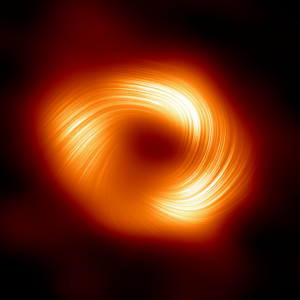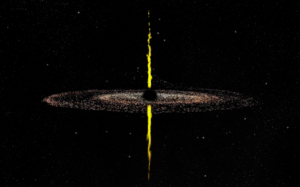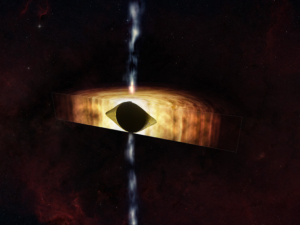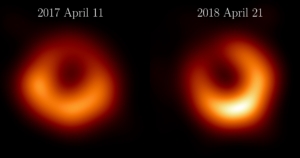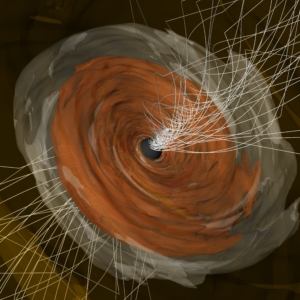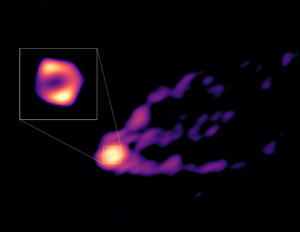The Event Horizon Telescope (EHT) collaboration has observed spirals of light escaping from the edge of the supermassive black…
Radio Observations of Compact Symmetric Objects Shed New Light on Black Hole Phenomenon
Compact Symmetric Objects (CSOs) have long puzzled astronomers with their unique characteristics. These active galaxies harbor supermassive black holes that emit powerful jets traveling at near-light speeds in opposite directions. However, unlike their counterparts in other galaxies, these jets remain compact, not extending out to great distances as expected. For decades, scientists presumed that CSOs were youthful entities, with their jets destined to expand over time. New findings, published in three papers in The Astrophysical Journal, challenge this notion.
Telescopes Show the Milky Way’s Black Hole is Ready for a Kick
A new study may help settle the question of how rapidly the Milky Way’s supermassive black hole is spinning.
New Details of Supermassive Black Hole’s Shadow Revealed
The Event Horizon Telescope (EHT) Collaboration has released new images of supermassive black hole M87*. A recent paper published in the journal Astronomy & Astrophysics presents new images from data collected by the Atacama Large Millimeter/submillimeter Array (ALMA) and several other instruments within the EHT. These new images show a bright ring surrounding a deep central depression, “the shadow of the black hole,” as predicted by general relativity. Excitingly, the brightness peak of the ring has shifted by about 30º compared to the first images, which is consistent with scientists’ theoretical understanding of variability from turbulent material around black holes.
A Supermassive Black Hole’s Strong Magnetic Fields are Revealed in a New Light
The Event Horizon Telescope (EHT) collaboration has published new results that describe for the first time how light from the edge of the supermassive black hole M87* spirals as it escapes the black hole’s intense gravity, a signature known as circular polarization.
NSF Telescopes Image M87’s Supermassive Black Hole and Massive Jet Together for the First Time
Scientists studying the supermassive black hole at the heart of the M87 galaxy have revealed the origins of the monster’s powerful jet and imaged the jet and its source together for the first time. What’s more, the observations have revealed that the black hole’s ring is much larger than scientists previously believed.


